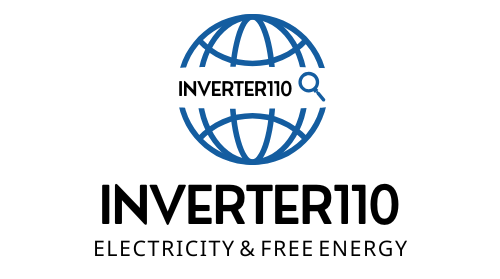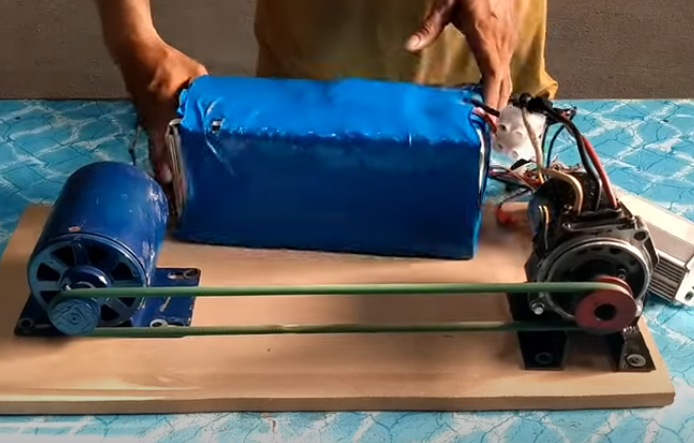How To Make Electricity Generator With BLDC Motor And 220V Alternator At Home
DIY Power Generation Project Guide
Introduction
In today’s world, with rising electricity costs and growing interest in renewable energy, building a home electricity generator is both practical and rewarding. One of the most efficient and cost-effective DIY projects involves using a BLDC (Brushless DC) motor and a 220V alternator. Whether you’re an engineering enthusiast, off-grid homesteader, or just curious about alternative energy, this guide will teach you how to make your own generator with simple tools and materials.
In this detailed step-by-step tutorial, you’ll learn:
What a BLDC motor and 220V alternator are
Why they work well together for electricity generation
Tools and components you’ll need
Step-by-step instructions to build your generator
Safety precautions and testing methods
How to use or store the generated electricity
Let’s dive in.
What is a BLDC Motor?
A Brushless DC Motor (BLDC) is a type of motor known for its high efficiency, low maintenance, and long lifespan. Unlike brushed motors, BLDCs use electronic controllers to manage the motor’s function, eliminating the need for brushes and commutators.
Advantages of BLDC Motors for Power Generation
High Efficiency
Low Noise & Heat
Longer Lifespan
Compact and Lightweight
Excellent Torque-Speed Characteristics
When spun externally (e.g., with wind, pedal, or mechanical force), a BLDC motor can work as a generator, converting kinetic energy into electricity.
What is a 220V Alternator?
An alternator is a device that converts mechanical energy into alternating current (AC). The 220V alternator commonly found in vehicles or generators is perfect for powering appliances and tools in regions where the voltage standard is 220V.
How Do They Work Together?
In this project, the BLDC motor acts as the prime mover, spinning the 220V alternator. The mechanical rotation from the motor turns the alternator, which then produces 220V AC electricity. It’s like building a mini power plant in your garage!
Required Materials and Tools
✅ Main Components
BLDC Motor (24V or 48V preferred)
220V AC Alternator (preferably from a small generator or vehicle)
DC Power Supply (Battery or solar panel to run the BLDC motor)
Motor Controller (ESC for BLDC)
Pulley System or Gearbox (for RPM matching)
Voltage Regulator (Optional but recommended)
Inverter (If using DC appliances)
🔧 Tools Needed
Wrench set
Soldering iron
Wire cutters and crimpers
Drill machine
Multimeter
Insulating tape
Safety gloves and goggles
Mounting frame (metal or wooden)
Step-by-Step Guide to Build Your Electricity Generator
Step 1: Mount the BLDC Motor and Alternator
Secure both the BLDC motor and 220V alternator on a sturdy base or frame using bolts. Ensure both shafts are aligned correctly to avoid mechanical losses.
Tip: Use rubber gaskets or vibration-dampening mounts to reduce wear and noise.
Step 2: Set Up the Coupling or Pulley Drive
Connect the shafts using a pulley and belt or direct coupling. If you’re using a pulley system, adjust the size of the pulleys to match the required RPM of the alternator.
BLDC Motor Output: ~1000–3000 RPM
Alternator Ideal Input: 1800–3600 RPM
You may need a step-up gear ratio to achieve this.
Step 3: Connect the ESC and Power Supply to the BLDC Motor
Wire the Electronic Speed Controller (ESC) to the BLDC motor. Connect your battery or power source to the ESC. If using solar panels, ensure your panels provide enough voltage and amperage to drive the motor.
Important: Always use proper connectors and check polarity before powering up.
Step 4: Test Motor Rotation Without Alternator Load
Before connecting the alternator, run the BLDC motor to ensure it spins freely and efficiently. Adjust the ESC for smooth startup and speed control.
Step 5: Connect the Alternator
Once the motor setup works smoothly, connect the alternator to the motor shaft via the pulley or coupling. Ensure tight alignment and belt tension (if applicable).
Step 6: Monitor Output Voltage and Frequency
Use a multimeter to measure the output voltage and a frequency meter (optional) to check the AC frequency from the alternator. Aim for:
Voltage: ~220V AC
Frequency: 50Hz or 60Hz (depending on your region)
If the voltage is too low, increase the RPM of the BLDC motor.
Safety Precautions
Never touch exposed wires while the generator is running
Install fuses and circuit breakers
Use insulated tools
Avoid overloading the alternator
Test outdoors or in a ventilated space
Wear protective gloves and goggles
How to Use the Generated Electricity
Once your generator is functional, you can power:
LED lights
Small fans
Charging stations
Emergency appliances
Battery banks (using rectifier + regulator)
To store electricity, connect the output to a battery system via a rectifier and voltage regulator.
Optional Add-ons for Better Efficiency
MPPT Controller: If using solar as input
Battery Storage System
Load Balancer
AC to DC Conversion Unit
Voltage Display Panel
Cooling Fans for BLDC Motor
Real-World Use Cases
Off-grid homes in rural areas
Emergency backup systems
Educational science projects
Low-cost charging stations
Portable energy solutions for campsites or RVs
Troubleshooting Tips
| Problem | Possible Causes | Fix |
|---|---|---|
| No output | Bad wiring or loose connection | Check all terminals |
| Low voltage | RPM too low | Increase motor speed |
| Motor overheating | Overloaded or blocked | Use a heatsink/fan |
| Alternator vibration | Misalignment | Realign shaft and pulley |
| AC output fluctuating | Poor coupling or loose belt | Tighten system or use better gear ratio |
SEO Keywords Used in This Article
How to make generator with BLDC motor
DIY electricity generator at home
220V alternator generator project
BLDC motor power generation
Homemade generator with alternator
Alternative energy generator DIY
Free energy system with BLDC
Build your own power supply
Off-grid electricity solutions
Emergency home generator DIY
Conclusion
Building your own electricity generator using a BLDC motor and a 220V alternator is not only a fun and educational experience, but it also opens the door to energy independence. Whether you’re using it for backup power, learning, or small-scale energy harvesting, this setup is reliable, modular, and cost-effective.
With proper safety measures, accurate assembly, and a little fine-tuning, you can enjoy a personal energy solution right from your garage. Plus, it’s a great way to dive into the world of renewable energy.
FAQs
Q1: Can I use a washing machine motor instead of a BLDC?
Yes, but BLDC motors are more efficient and quieter.
Q2: What battery size is ideal for the BLDC motor?
Depends on the motor rating. For a 24V BLDC, use a 24V lithium or lead-acid battery with sufficient Ah rating (20Ah+ recommended).
Q3: Can I directly run home appliances with this setup?
Yes, but ensure the output is stable 220V AC. For safety, use a surge protector and voltage regulator.
Q4: Can I make this system portable?
Yes, with a smaller alternator and BLDC motor on a wheeled frame.

